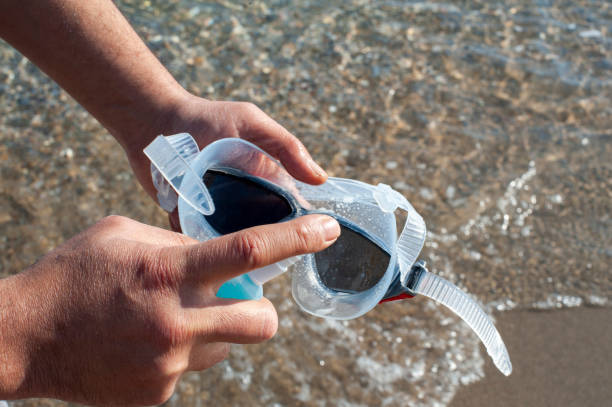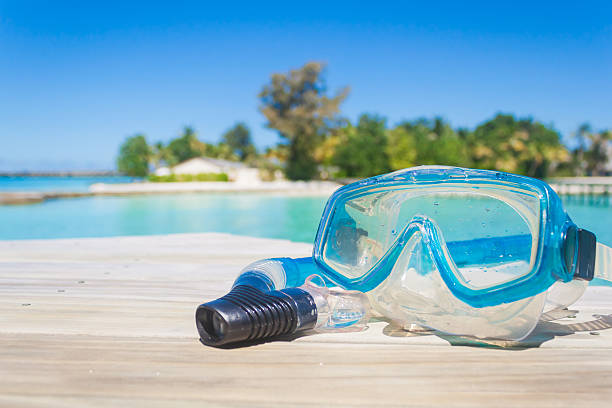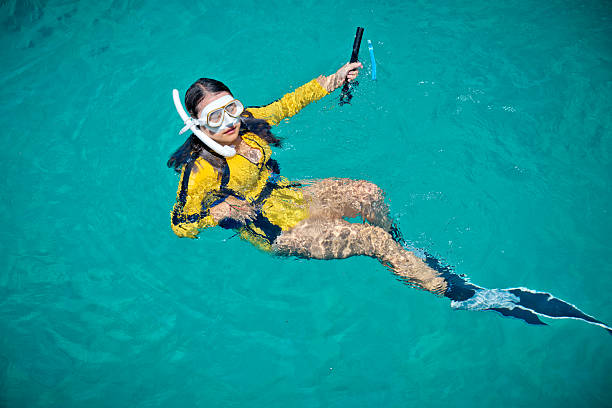वेटसूट पानी के शौकीनों के लिए तैराकी के लिए ज़रूरी उपकरण हैं, जो मौसम के प्रभाव से इन्सुलेशन और सुरक्षा प्रदान करते हैं। वेटसूट की मोटाई और पानी के तापमान के बीच के संबंध को समझना जलीय रोमांच के लिए सही गियर चुनने के लिए महत्वपूर्ण है। वेटसूट की मोटाई गाइड सेल्सियस के बारे में यह लेख पानी के तापमान और गतिविधि के प्रकार के अनुसार वेटसूट की मोटाई के चयन की पेचीदगियों का पता लगाएगा।
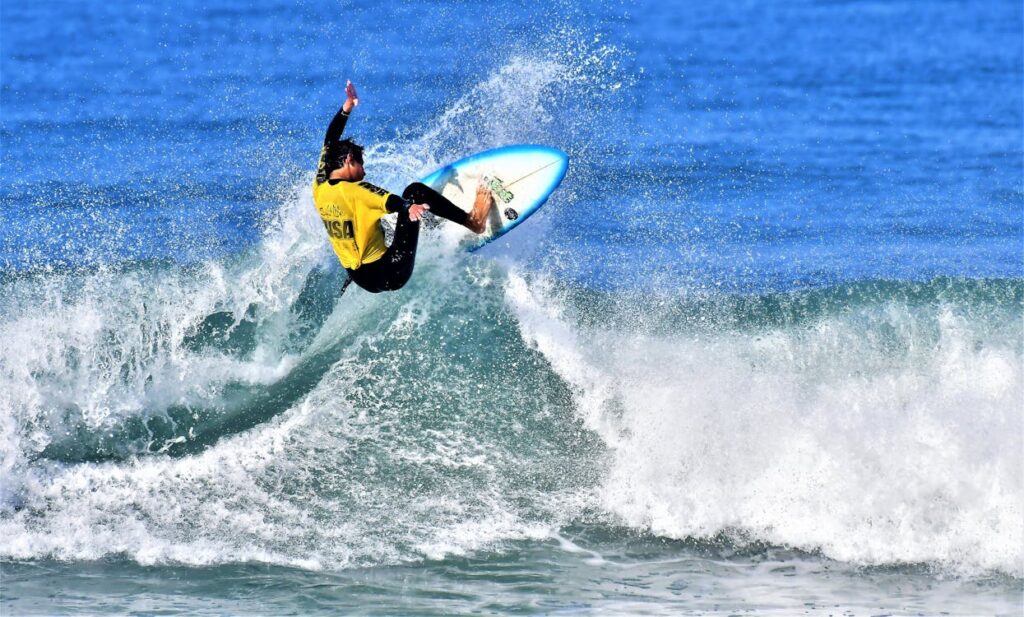
वेटसूट की मोटाई का विवरण
वेटसूट की मोटाई नियोप्रीन सामग्री की मोटाई को दर्शाती है, जिसे आम तौर पर मिलीमीटर (मिमी) में मापा जाता है। नियोप्रीन जितना मोटा होगा, उतना ही ज़्यादा इन्सुलेशन प्रदान करेगा।
दूसरी ओर, नियोप्रीन की मोटाई माप आम तौर पर 3/2 मिमी या 5/4/3 मिमी संयोजनों में दर्शाई जाती है। पहली संख्या धड़ क्षेत्र में नियोप्रीन की मोटाई को दर्शाती है, जबकि बाद की संख्या अंगों में मोटाई को दर्शाती है।
अक्सर, पानी का तापमान, पानी की गहराई, गतिविधि की अवधि और ठंड के प्रति व्यक्तिगत सहनशीलता वेटसूट की मोटाई के चुनाव को प्रभावित कर सकती है। इसलिए, इन कारकों को समझना एक आदर्श वेटसूट चुनने में मदद करता है।
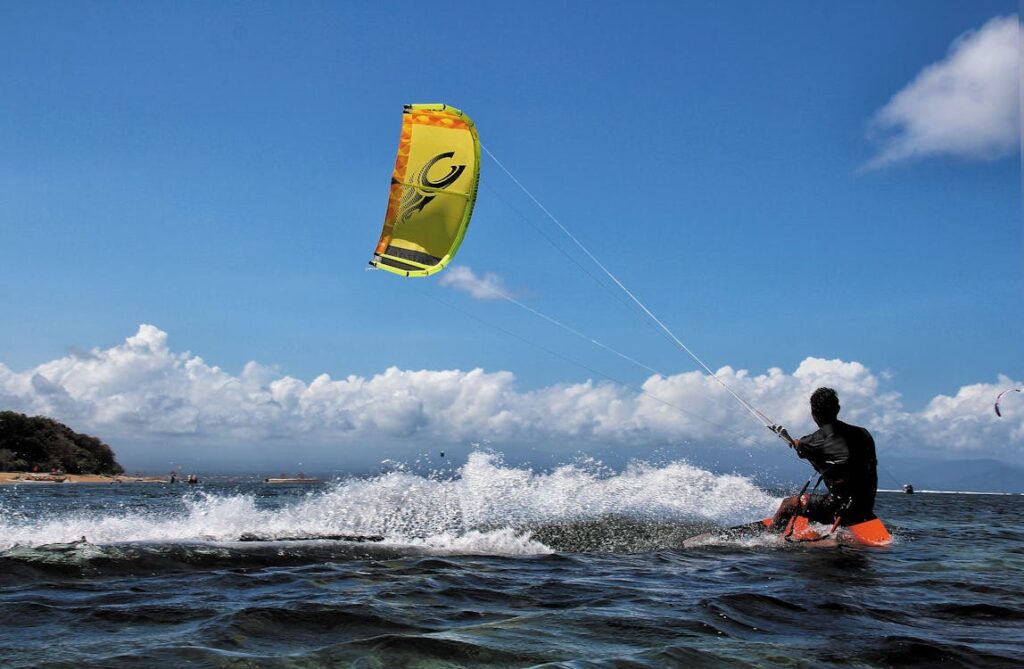
पानी के तापमान के अनुसार वेटसूट की अनुशंसित मोटाई
हालांकि मोटे वेटसूट इन्सुलेशन में बेहतर प्रदर्शन प्रदान कर सकते हैं, लेकिन वे आंदोलन को भी प्रतिबंधित कर सकते हैं, इसलिए सही संतुलन खोजना आवश्यक है। अलग-अलग तापमान पर अलग-अलग गतिविधियों के लिए विशिष्ट आवश्यकताओं और स्थितियों को समायोजित करने के लिए वेटसूट की अलग-अलग मोटाई की आवश्यकता हो सकती है।
गर्म पानी (77°F या 24°C से अधिक)
1 मिमी से 3 मिमी की मोटाई वाले वेटसूट गर्म पानी में उपयुक्त होते हैं, जैसे कि उष्णकटिबंधीय जलवायु में। ये पतले सूट मामूली खरोंच और जेलीफ़िश के डंक से बचाते हैं, साथ ही स्नोर्कलिंग और तैराकी जैसी गतिविधियों के लिए स्वतंत्र रूप से घूमने की अनुमति देते हैं।
मध्यम पानी (60°F – 77°F या 15-21°C)
60°F से 77°F तक के मध्यम पानी के तापमान के लिए, 3 मिमी से 5 मिमी की मोटाई वाले वेटसूट की सिफारिश की जाती है। ये सूट ठंडे तटीय पानी में सर्फिंग, विंडसर्फिंग और काइटबोर्डिंग के लिए पर्याप्त इन्सुलेशन प्रदान करते हैं।
ठंडा पानी (60°F या 15°C से कम)
60°F से कम तापमान वाले ठंडे पानी में, शरीर की गर्मी बनाए रखने और हाइपोथर्मिया को रोकने के लिए मोटे वेटसूट की आवश्यकता होती है। ठंडे मौसम में स्कूबा डाइविंग और खुले पानी में तैराकी जैसी गतिविधियों के लिए 5 मिमी से 7 मिमी या उससे अधिक मोटाई वाले ठंडे पानी के वेटसूट आवश्यक इन्सुलेशन प्रदान करते हैं।
मुझे वेटसूट की कितनी मोटाई की आवश्यकता है?
जलीय रोमांच की तैयारी करते समय, अक्सर उठने वाले मूलभूत प्रश्नों में से एक यह है: मुझे किस मोटाई के वेटसूट की आवश्यकता है? चाहे आप लहरों पर सर्फ करने की योजना बना रहे हों, गहराई में गोता लगाने की योजना बना रहे हों, या शांत पानी में पैडल मारने की योजना बना रहे हों, सही वेटसूट आपके आराम और आनंद में बहुत अंतर ला सकता है। आम तौर पर, अलग-अलग गतिविधियों के लिए अलग-अलग मोटाई के वेटसूट की आवश्यकता होती है। आइए वेटसूट की मोटाई की गहराई में गोता लगाएँ और अपने अगले जलीय रोमांच के लिए आदर्श फिट खोजने के रहस्यों को उजागर करें।
विंडसर्फिंग और सर्फिंग वेटसूट्स की मोटाई गाइड
सर्फिंग वेटसूट तापीय इन्सुलेशन, घर्षण प्रतिरोध और लचीलापन प्रदान करते हैं, जिससे सर्फर्स को ठंडे पानी में गर्म और चुस्त बने रहने में मदद मिलती है, साथ ही सर्फबोर्ड से घर्षण से भी सुरक्षा मिलती है।
| पानी का तापमान | वेटसूट की मोटाई | वेटसूट का प्रकार | बूटियां | दस्ताने | कनटोप |
| 10°C (50°F) से नीचे | 6/5 मिमी या 7 मिमी | फुलसूट | 5 मिमी आवश्यक | 5 मिमी आवश्यक | 5 मिमी आवश्यक |
| 10-14°C (50-57°F) | 5/4 मिमी | फुलसूट | 5 मिमी अनुशंसित | 5 मिमी अनुशंसित | 3 मिमी अनुशंसित |
| 14-18°C (57-64°F) | 4/3 मिमी | फुलसूट | 3 मिमी वैकल्पिक | 3 मिमी वैकल्पिक | 3 मिमी वैकल्पिक |
| 18-21°C (64-70°F) | 3/2 मिमी | फुलसूट | 3 मिमी वैकल्पिक | 2 मिमी वैकल्पिक | 2 मिमी वैकल्पिक |
| 21-24°C (70-75°F) | 2 मिमी | स्प्रिंगसूट | आवश्यक नहीं | आवश्यक नहीं | आवश्यक नहीं |
| 24°C (75°F) से ऊपर | 1 मिमी या रैशगार्ड | टॉप/शॉर्टी | आवश्यक नहीं | आवश्यक नहीं | आवश्यक नहीं |
स्कूबा डाइविंग वेटसूट मोटाई गाइड
सर्फिंग वेटसूट के समान, गोताखोरी के लिए उपयुक्त वेटसूट की मोटाई का चयन सुनिश्चित करता है कि गोताखोर गर्म रहें, तटस्थ उछाल बनाए रखें, और पानी के नीचे अन्वेषण के दौरान समुद्री खतरों से सुरक्षित रहें।
| पानी का तापमान | वेटसूट की मोटाई | वेटसूट का प्रकार | बूटियां | दस्ताने | कनटोप |
| 10°C (50°F) से नीचे | 7 मिमी या अधिक मोटा | फुलसूट | 5 मिमी आवश्यक | 5 मिमी आवश्यक | 5 मिमी आवश्यक |
| 10-16°C (50-61°F) | 7 मिमी या 5 मिमी | फुलसूट | 5 मिमी अनुशंसित | 3 मिमी अनुशंसित | 3 मिमी अनुशंसित |
| 16-21°C (61-70°F) | 5 मिमी | फुलसूट | 3 मिमी वैकल्पिक | 3 मिमी वैकल्पिक | 3 मिमी वैकल्पिक |
| 21-24°C (70-75°F) | 3-5 मिमी | फुलसूट/स्प्रिंगसूट | वैकल्पिक | वैकल्पिक | वैकल्पिक |
| 24°C (75°F) से ऊपर | 3 मिमी या उससे कम | स्प्रिंगसूट/शॉर्टी | आवश्यक नहीं | आवश्यक नहीं | आवश्यक नहीं |
फ्री डाइविंग वेटसूट्स मोटाई गाइड
फ्री डाइविंग के लिए वेटसूट हाइड्रोडायनामिक्स को बढ़ाते हैं और फ्री डाइवर्स को गर्मी बनाए रखने, उनकी गतिविधियों को सुव्यवस्थित करने और अलग-अलग गहराई पर गोता लगाने के समय को बढ़ाने में लचीलापन प्रदान करते हैं।
| पानी का तापमान | वेटसूट की मोटाई | वेटसूट का प्रकार | बूटियां | दस्ताने | कनटोप |
| 18°C (64°F) से नीचे | 5 मिमी या अधिक मोटा | फुलसूट | 5 मिमी आवश्यक | 3 मिमी वैकल्पिक | 3 मिमी वैकल्पिक |
| 18-22°C (64-72°F) | 3-5 मिमी | फुलसूट/स्प्रिंगसूट | वैकल्पिक | वैकल्पिक | वैकल्पिक |
| 22-24°C (72-75°F) | 2-3 मिमी | स्प्रिंगसूट/शॉर्टी | आवश्यक नहीं | आवश्यक नहीं | आवश्यक नहीं |
| 24°C (75°F) से ऊपर | 1-2 मिमी या कोई नहीं | रेश गार्ड | आवश्यक नहीं | आवश्यक नहीं | आवश्यक नहीं |
खुले पानी में तैराकी और स्नोर्कलिंग वेटसूट्स की मोटाई गाइड
खुले पानी में तैराकी के लिए वेटसूट तैराकों को लंबी दूरी तक खुले पानी में तैरते समय गर्मी, उछाल और दक्षता बनाए रखने में मदद कर सकते हैं। स्नॉर्कलिंग के लिए वेटसूट यह सुनिश्चित करना कि स्नोर्कलर गर्म रहें, पराबैंगनी किरणों से सुरक्षित रहें, तथा सतह के निकट प्रवाल भित्तियों और समुद्री जीवन का अन्वेषण करते समय तैरते रहें।
| पानी का तापमान | वेटसूट की मोटाई | वेटसूट का प्रकार | बूटियां | दस्ताने | कनटोप |
| 18°C (64°F) से नीचे | 3-5 मिमी | फुलसूट | वैकल्पिक | वैकल्पिक | वैकल्पिक |
| 18-24°C (64-75°F) | 2-3 मिमी | स्प्रिंगसूट/शॉर्टी | आवश्यक नहीं | आवश्यक नहीं | आवश्यक नहीं |
| 24°C (75°F) से ऊपर | 1-2 मिमी या उससे कम | रेश गार्ड | आवश्यक नहीं | आवश्यक नहीं | आवश्यक नहीं |
ट्रायथलॉन वेटसूट्स मोटाई गाइड
ट्रायथलॉन के लिए वेटसूट ट्रायथलीटों को गर्मी बनाए रखने, प्रतिरोध को कम करने, तथा दौड़ के तैराकी खंडों के दौरान पानी में कुशलतापूर्वक आगे बढ़ने में सहायता करते हैं।
| पानी का तापमान | वेटसूट की मोटाई | वेटसूट का प्रकार | बूटियां | दस्ताने | कनटोप |
| 18°C (64°F) से नीचे | 3-5 मिमी | फुलसूट | आवश्यक नहीं | आवश्यक नहीं | आवश्यक नहीं |
| 18-24°C (64-75°F) | 2-3 मिमी | स्प्रिंगसूट/शॉर्टी | आवश्यक नहीं | आवश्यक नहीं | आवश्यक नहीं |
| 24°C (75°F) से ऊपर | 1-2 मिमी या उससे कम | रेश गार्ड | आवश्यक नहीं | आवश्यक नहीं | आवश्यक नहीं |
काइटबोर्डिंग वेटसूट्स मोटाई गाइड
पतंगबाज़ी के लिए वेटसूट प्रभाव सुरक्षा प्रदान करते हैं, जिससे पतंगबाज़ों को गर्म रहने, प्रभावों से बचने, तथा पानी पर रोमांचकारी सवारी के लिए पवन ऊर्जा का उपयोग करते समय चुस्त बने रहने में मदद मिलती है।
| पानी का तापमान | वेटसूट की मोटाई | वेटसूट का प्रकार | बूटियां | दस्ताने | कनटोप |
| 16°C (61°F) से नीचे | 5/4 मिमी या अधिक मोटा | फुलसूट | 5 मिमी आवश्यक | 5 मिमी अनुशंसित | 3 मिमी अनुशंसित |
| 16-21°C (61-70°F) | 4/3 मिमी या 3/2 मिमी | फुलसूट | 3 मिमी वैकल्पिक | 3 मिमी वैकल्पिक | 3 मिमी वैकल्पिक |
| 21-24°C (70-75°F) | 3/2 मिमी | स्प्रिंगसूट | वैकल्पिक | वैकल्पिक | वैकल्पिक |
| 24°C (75°F) से ऊपर | 2/1 मिमी या उससे कम | स्प्रिंगसूट/टॉप | आवश्यक नहीं | आवश्यक नहीं | आवश्यक नहीं |
कयाकिंग और वेकबोर्डिंग और स्टैंड-अप पैडलबोर्डिंग (एसयूपी) वेटसूट्स मोटाई गाइड
कयाकिंग के लिए वेटसूट कयाकरों को घर्षण और प्रभावों से खुद को बचाने में मदद कर सकते हैं, और विभिन्न जल स्थितियों में पैडलिंग करते समय आराम से चलने में मदद कर सकते हैं। वेकबोर्डिंग के लिए, वेकबोर्डर्स गिरने से बचने के लिए और नावों के पीछे हवाई युद्धाभ्यास करते समय चुस्त रहने के लिए। और SUP के लिए, पैडलबोर्डर्स UV किरणों से सुरक्षित रहते हैं और शांत या अशांत पानी में पैडलिंग करते समय चुस्त रहते हैं।
| पानी का तापमान | वेटसूट की मोटाई | वेटसूट का प्रकार | बूटियां | दस्ताने | कनटोप |
| 16°C (61°F) से नीचे | 5/4 मिमी या अधिक मोटा | फुलसूट | 5 मिमी आवश्यक | 5 मिमी अनुशंसित | 3 मिमी अनुशंसित |
| 16-21°C (61-70°F) | 4/3 मिमी या 3/2 मिमी | फुलसूट | 3 मिमी वैकल्पिक | 3 मिमी वैकल्पिक | 3 मिमी वैकल्पिक |
| 21-24°C (70-75°F) | 3/2 मिमी या 2 मिमी | स्प्रिंगसूट/शॉर्टी | वैकल्पिक | वैकल्पिक | वैकल्पिक |
| 24°C (75°F) से ऊपर | 2/1 मिमी या उससे कम | स्प्रिंगसूट/टॉप | आवश्यक नहीं | आवश्यक नहीं | आवश्यक नहीं |
निष्कर्ष
वेटसूट की मोटाई गाइड सेल्सियस के बारे में इस लेख में, पानी के शौकीन लोग प्रत्येक गतिविधि की अनूठी जरूरतों को समझकर और उचित वेटसूट मोटाई का चयन करके पानी पर अपने आनंद और प्रदर्शन को अधिकतम कर सकते हैं। विभिन्न जल गतिविधियों के लिए थर्मल सुरक्षा, लचीलापन, उछाल और आराम सहित विशिष्ट आवश्यकताओं के अनुरूप वेटसूट की आवश्यकता होती है। चाहे सर्फिंग हो, डाइविंग हो या पैडलिंग, सही वेटसूट चुनना सभी जलीय रोमांचों में आराम, सुरक्षा और आत्मविश्वास सुनिश्चित करता है।
सामान्य प्रश्न
यदि वेटसूट बहुत मोटा हो तो क्या होगा?
अगर वेटसूट बहुत मोटा है, तो यह हरकत और लचीलेपन को सीमित कर सकता है, जिससे पानी में आराम से गतिविधियाँ करना चुनौतीपूर्ण हो सकता है। इसके अलावा, अत्यधिक मोटाई गर्म परिस्थितियों में ज़्यादा गरम होने का कारण बन सकती है, जिससे पहनने वाले को असुविधा और थकान हो सकती है।
3मिमी नियोप्रीन कितना गर्म है?
3 मिमी नियोप्रीन वेटसूट मध्यम थर्मल इन्सुलेशन प्रदान करता है, जो लगभग 65°F से 75°F (18°C से 24°C) तक के पानी के तापमान के लिए उपयुक्त है। यह बहुत भारी या प्रतिबंधात्मक होने के बिना हल्के से मध्यम ठंडी परिस्थितियों में गर्मी और आराम प्रदान करता है।
क्या 4 मिमी वेटसूट सर्दियों के लिए ठीक है?
4 मिमी वेटसूट सर्दियों के लिए उपयुक्त है, जो विशिष्ट पानी के तापमान और जलवायु पर निर्भर करता है। यह आमतौर पर 55°F से 65°F (13°C से 18°C) तक के ठंडे पानी में गर्मी प्रदान करता है। हालाँकि, 50°F (10°C) से कम की अत्यधिक ठंड में, पर्याप्त गर्मी और आराम के लिए एक मोटा वेटसूट या अतिरिक्त थर्मल परतें आवश्यक हो सकती हैं।
क्या आप गर्मियों में 4/3 वेटसूट पहन सकते हैं?
निश्चित रूप से! 4/3 वेटसूट आम तौर पर लगभग 55°F से 70°F (13°C से 21°C) तक के पानी के तापमान के लिए उपयुक्त होता है। हालांकि यह गर्मियों में ठंडे पानी में या सुबह या शाम के समय पर्याप्त गर्मी प्रदान कर सकता है, लेकिन गर्म जलवायु में या दोपहर की गर्मी के दौरान यह अत्यधिक गर्म महसूस हो सकता है।
